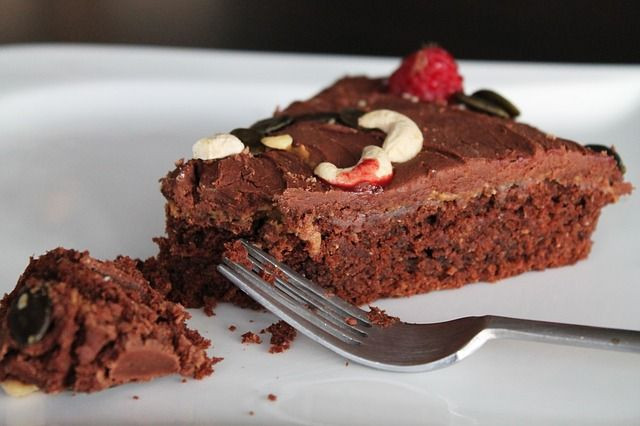Frosting on The Cake: Images On Food Packaging May Lead people To Consume More Than The Recommended Serving Size

The serving sizes on the back of some food packages are unrealistic, especially when the packages are three to four times the recommended amount — do you limit yourself to just 8 ounces of Sprite or do you drink the whole 20-ounce bottle? This is called the “ pack size effect .” New research published in Public Health Nutrition found that in addition to pack size, images on food packaging may have an even stronger influence on people to than serving size, causing them to consume more than recommended amount, especially when there are additional food items depicted on these packages, such as frosting on cake-mix boxes.
“If what is seen can be more powerful than what is said, these effects should be even stronger for what is seen and not said. This is the case with many of the extras that are depicted on packaging such as sauces on main dishes, syrup on pancakes, dips with chips, sprinkles on ice creams and frosting on cake,” researchers wrote.
After conducting a series of four studies involving a total of 51 different cake mixes, researchers at Cornell University’s Food and Brand Lab found that people overestimated the appropriate serving size when shown cake mix boxes with depictions of frosted cake — for those of you who don’t know, frosting usually isn’t included in boxed cake mix. It’s purchased separately.
"If we see a slice of cake smothered in frosting on the cake box, we think that is what is normal to serve and eat, but that's not what is reflected in the serving size recommendation on the nutrition label," Dr. John Brand, lead study author and researcher, said in a statement .
The first study compared the calories on the nutrition labels of boxed cake mix with the calories displayed on the box, they found that the frosted cake on food packaging amounted to nearly 135 percent more calories than the recommended serving size. In studies 2, 3 and 4, researchers undergraduates and food-service professionals were given one of these typical cake mix boxes, with some being told the frosting was not included on the nutrition label, whereas others were given no additional information, and they were asked to indicate what they believe would be a reasonable serving size. Researchers found that the depictions of overly caloric frosted cakes caused both undergraduates, and, surprisingly, food-service professionals to overestimate the serving size.
"Undoubtedly, companies don't intend to deceive us when they include frosting in cake box depictions, but these seemingly small elements of packaging can have a huge impact," said co-author Brian Wansink. Also, the fact that food service professionals were influenced to overstate the serving size, even when told the supplementary extras are not included on the nutrition label, shows that these images are strong enough to impact even the most nutritionally savvy consumers.
Although nutrition labels were designed to help people make healthier food choices and maintain their diets, research has shown that nearly 70 percent of consumers routinely ignore these labels. However, a prior study conducted by this group of researchers found that the framing of portion size greatly influences the amount of food people eat. For example, if people were given an overly large portion of a pasta meal, and they were told it was “regular” sized portion, they would still eat it because they believe it’s “regular” sized. Reinforcing the impact “pack size effect” and how food image can be more influential than nutrition labels.
The misleading practice of posting extra calories on packages is prevalent. To be less misleading, researchers suggest manufacturers state the calorie count for goods when supplemental extras such as suaces on foods and toppings, are included.
Source: Brand J, Wansink B, Cohen A. Frosting On The Cake: Pictures on Food Packaging Bias Serving Size. 2016. Public Health Nutrition, 2016
Published by Medicaldaily.com



























